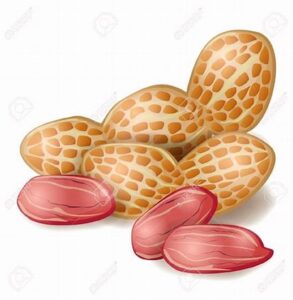

Salmonella and Food Safety – Some Remarkable Facts
Bacteria are remarkable organisms, capable of adapting to their environments. They are invisible except under a microscope, making it easy to underestimate their growth potential.
This posting discusses Salmonella and its ability to adapt and even cause foodborne illness. Our objective is to emphasize the ability of these organisms to adapt and change. Sanitation programs must also adapt, using new technologies, training and testing to control contamination.
Salmonella – Salmonella causes two types of illness: nontyphoid type (raw animal foods and produce); and typhoid fever (ready to eat foods, sandwiches, salads. The dose required to cause illness is very low, ranging from less than one organism to 1000 cells (in contrast, a million cells is often cited as the level capable of causing illness with other bacteria). The rate of death (mortality) ranges from 3.6% to as high as 10% in highly susceptible populations (elderly, youngers, compromised immune patients).
Although Salmonella traditionally was thought of as being associated with animal products in the past, fresh produce also has been the source of major outbreaks. The organism also survives well on low-moisture foods, such as spices, which have been the vehicles for large outbreaks. A few examples of foods that have been linked to Salmonella illness include meats, poultry, eggs, milk and dairy products, fish, shrimp, spices, yeast, coconut, sauces, freshly prepared salad dressings made with unpasteurized eggs, cake mixes, cream-filled desserts and toppings that contain raw egg, dried gelatin, peanut butter, cocoa, produce (fruits and vegetables, such as tomatoes, peppers, and cantaloupes), and chocolate. (1)
Remarkable Fact #1 – Most foodborne illness is associated with high moisture, mild foods. Salmonella, however, is estimated to be responsible for 94% of recalls of low water activity foods in the United States.
Salmonella makes its way into dry and low-moisture processing environments in ways that are similar to what is seen in higher moisture processing environments, including via raw materials (e.g., packaging materials, ingredients), air (e.g., air handling systems, receiving areas), water (e.g., sanitation), equipment or tools, employees or visitors, and pests (2).
Peanut butter is an example of a low moisture food which has been contaminated by Salmonella. In the past, this would be viewed with skepticism, even by sanitarians. This food has a moisture content of 6.5% dropping to 3% after roasting and a water activity of under 0.35 (1.00 is the highest measurement). Salmonella typically has a water activity of 0.99. When the peanuts are roasted at 140 degrees Centigrade for 20 minutes, it seems reasonable that Salmonella could not survive.
Still there are numerous foodborne illness cases associated with low moisture foods. The clue might be in cross contamination. If poor sanitation allowed cross contamination of a finished food product, Salmonella is capable of surviving under refrigeration temperatures for the products entire shelf life (2). In one of the most publicized cases, involving Peanut Corporation of America, investigators found sanitation (leaking roof, damaged sugar silo) and employee training concerns (test results showing Salmonella were not interpreted correctly) which could easily have allowed the peanuts to be contaminated during processing. So the important lesson here is diligent plant audits and continuous employee training.
Remarkable Fact #2 – Salmonella has remarkable abilities to adapt to its environment. When biological stresses are present (high or low temperature, drought, high salt, high winds or high light), it produces protection against them. After exposure to these biological stresses, the organism is even more resistant to further stresses during food processing (2). This exposure increases the chances of developing cross-tolerances to several potential future stressors leading to even more virulent (disease causing) cells in the final food product.
In the case of peanut butter, pe-exposure to stressors is common when peanuts are still in the shell during pre-harvest environments, in curing steps, and during roasting. Such pre-exposures subsequently confreres to Salmonella spp. even an increased resilience and survivability in low moisture and high-fat foods.
Salmonella can survive in low temperatures, growing slowly at refrigeration temperatures (39.2 degrees F.) and surviving at 35.6 degrees F. for weeks or months, depending on the type of food. (As with most bacteria, it is not killed by freezing but remains inactive during that storage.) It creates or imports substances to stabilize itself, slowing its metabolism, conserving energy and nutrients, allowing it to survive extended periods of time. Salmonella spp. can survive in low-moisture (<0.83 aw), high-protein, and high-fat foods for several years; furthermore, it is capable of surviving for longer periods at low-temperature storage. For example, when Salmonella spp. was inoculated in tahini (sesame butter product), and stored for 119 days at 4°C (39.2 F), it remained viable and did not show any substantial reduction in population over the entire storage period. It also can produce biofilms on surfaces to protect itself. In low moisture conditions, Salmonella produces substances (omniprotectants) either by producing them within its cell or importing it from the environment. It produces membranes, bridges between the cell and its environment to allow rapid movement of these substances into the cell often as quickly as twelve minutes after the stress is recognized. It can adjust its genetic materials to allow survival for extended periods and to protect its cell structure. Remarkable Fact #3 – Salmonella persists and can recycle back into food production. Once Salmonella is discovered in food production, it is persistent and not easily removed. It is also capable of moving from a host into the environment and returning to a new host after several years (2). In one case, Salmonella was found in contaminated water in a dry cereal plant. The water was used to mix mortar for construction in the plant. Years later, new renovations disturbed the mortar and Salmonella was found in cereals in the plant. Conclusions – Do not despair, be aware! Obtain your food safety training and train your employees regularly. Conduct your own plant sanitation audits; evaluate your facility every day for the smaller problems (cleaning, sanitation, faulty equipment, infrastructure repairs) you can correct today or budget for tomorrow. Depending on your size and resources, test surfaces and foods for the presence of pathogens such as Salmonella and Listeria. (1) The Bad Bug Book (FDA) https://www.fda.gov/food/foodborne-pathogens/bad-bug-book-second-edition?trk=public_post_comment-text (2) Chrissy Walsky, Rachel Cheng and Alexis M. Hamilton, Survival Strategies Used by Salmonella to Persist in Dry and Low-Moisture Processing Environments Virginia Cooperative Extension (VCE) Publications 8/14/2024 (3) Survival and Heat Resistance of Salmonella enterica and Escherichia coli O157:H7 in Peanut Butter Yingshu He, Dongjing Guo, Jingyun Yang, Mary Lou Tortorello, and Wei Zhang APPLIED AND ENVIRONMENTAL MICROBIOLOGY, Dec. 2011, p. 8434–8438 (4) Peanut Butter Food Safety Concerns—Prevalence, Mitigation and Control of Salmonella spp., and Aflatoxins in Peanut Butter Tapiwa Reward Sithole 1, Yu-Xiang Ma 1, Zhao Qin 1, Xue-De Wang 1,*, Hua-Min Liu MDPI Multi-Disciplinary Digital Publishing Institute (MDPI) Foods 2022 June 24 2022 11 (13) (5) Conagra Subsidiary Sentenced in Connection with Outbreak of Salmonella Poisoning Related to Peanut Butter press release 12/13/2016 Department of Justice Archives https://www.justice.gov/archives/opa/pr/conagra-subsidiary-sentenced-connection-outbreak-salmonella-poisoning-related-peanut-butter
